|
|||
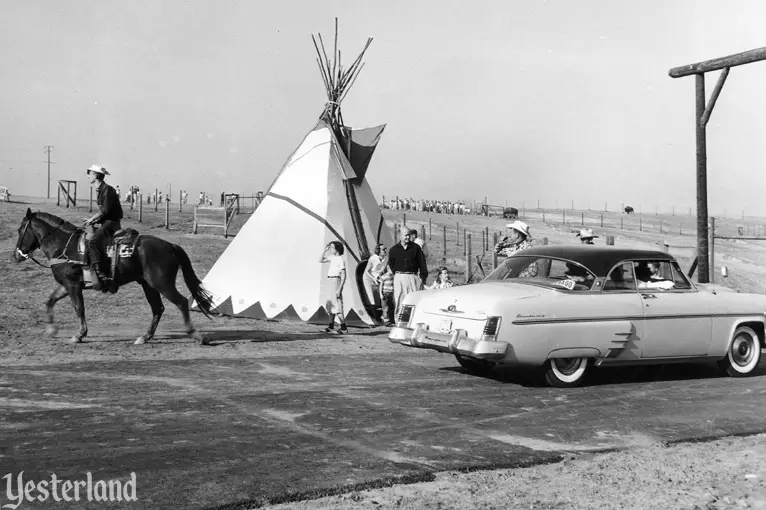
Photo by Robert Geivet, 1955, courtesy of the Old Orange County Courthouse Museum / Orange County Archives Old West meets the New West |
|||
|
It’s 1955. There’s a brand new attraction in Orange County. There’s nothing else like it anywhere. No, this isn’t that new park in Anaheim. It’s the Newport Harbor Buffalo Ranch. |
|||
|
|
|||
|
Start your visit by driving your car through the 115-acre Buffalo Ranch. Keep your eyes open for the “brahmalo” bulls. These two 2,700-pound beasts—bred from brahmas and buffalo—are said to be the largest buffalo bulls in the entire United States. |
|||
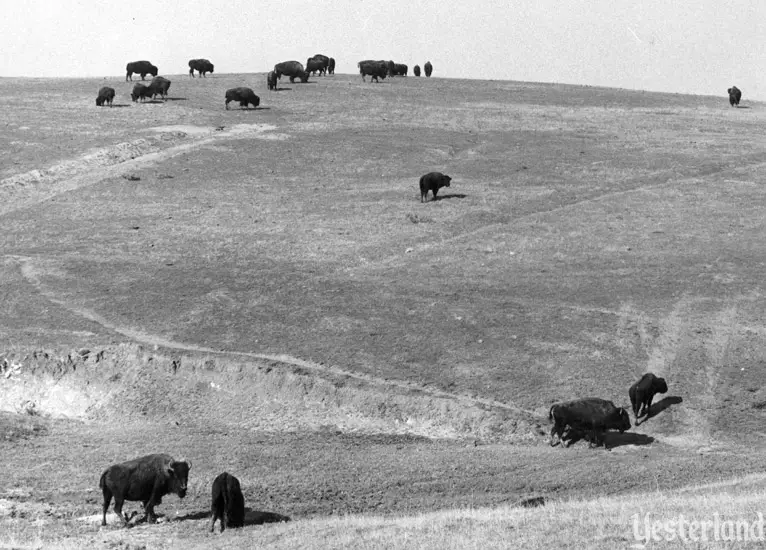
Photo by Robert Geivet, 1955, courtesy of the Old Orange County Courthouse Museum / Orange County Archives Impressive creatures |
|||
|
You’ll be in the middle of a herd of buffalo, shipped here from Kansas in late 1954. Okay, technically they’re not buffalo; they’re really bison. Buffalo are Asian animals. But everyone calls them buffalo, and that’s what they’re called on all those Westerns you see on TV—on all three networks. |
|||
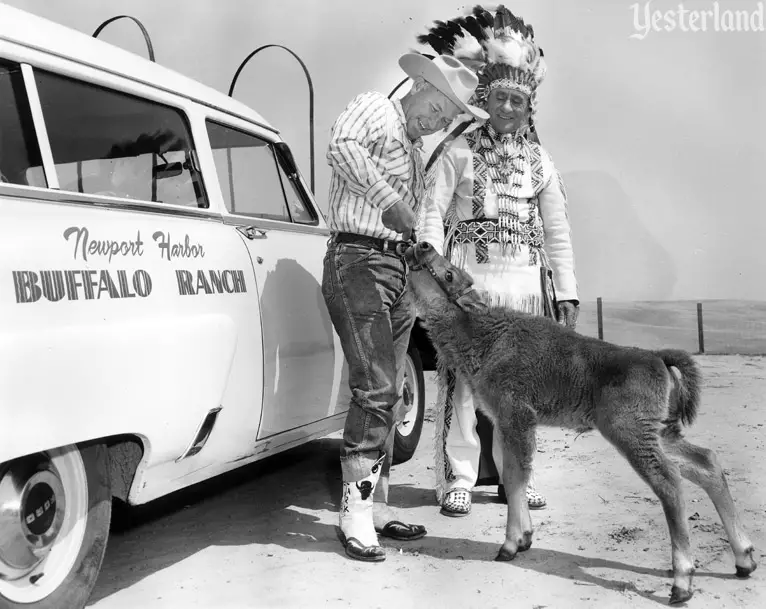
Photo by Robert Geivet, 1955, courtesy of the Old Orange County Courthouse Museum / Orange County Archives Owner Gene Clark and Chief Push Ma-Ta-Ha with a buffalo calf |
|||
|
Once there were 50 million buffalo roaming the great plains of America. The Buffalo Ranch began with 74 bison, but the number has been increasing. It’s not just a visitor attraction; it’s also a working ranch where the animals reproduce. Sometimes the population of buffalo goes down rather than up. A few of the animals you see through your car window will wind up as Buffaloburgers here at the Ranch or on dinner plates somewhere else. Twice each week, Knott’s Berry Farm serves buffalo, and that meat comes from the Newport Harbor Buffalo Ranch. |
|||
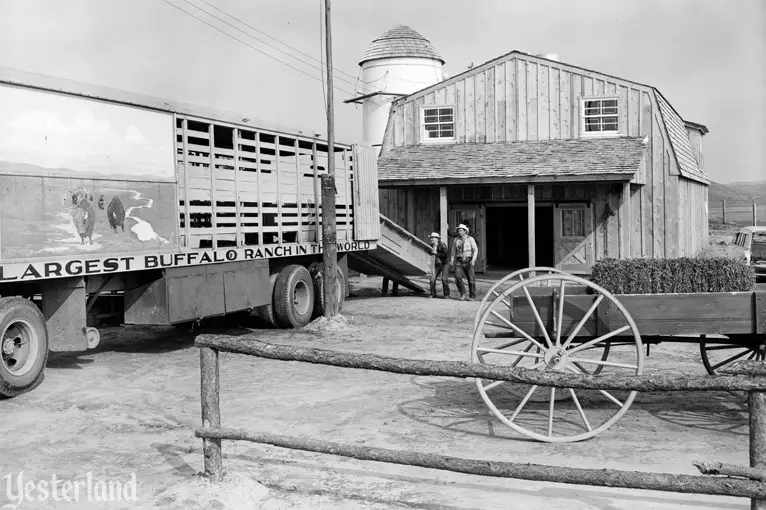
Photo by Robert Geivet, 1955, courtesy of the Old Orange County Courthouse Museum / Orange County Archives Porter’s Western Store, in an authentic barn |
|||
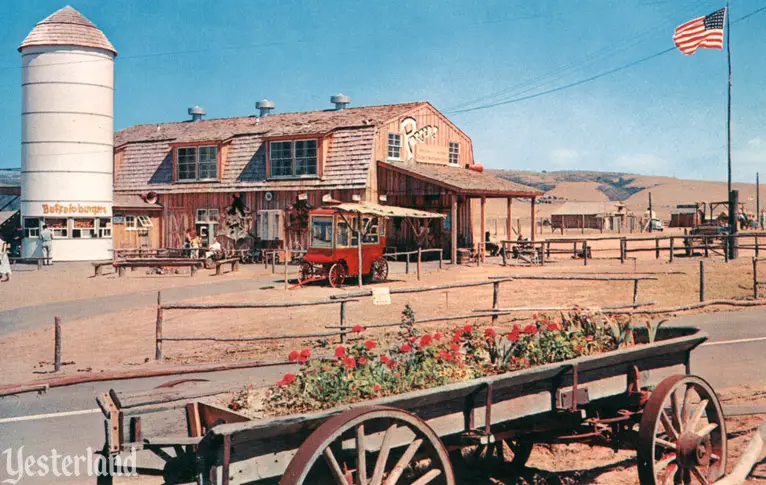
Photo courtesy of the Orange County Archives, from the Tom Pulley Collection Another view of Porter’s Western Store |
|||
|
One of the landmarks of the Buffalo Ranch is Porter’s Western Store. Do you see the white silo next to the barn? |
|||
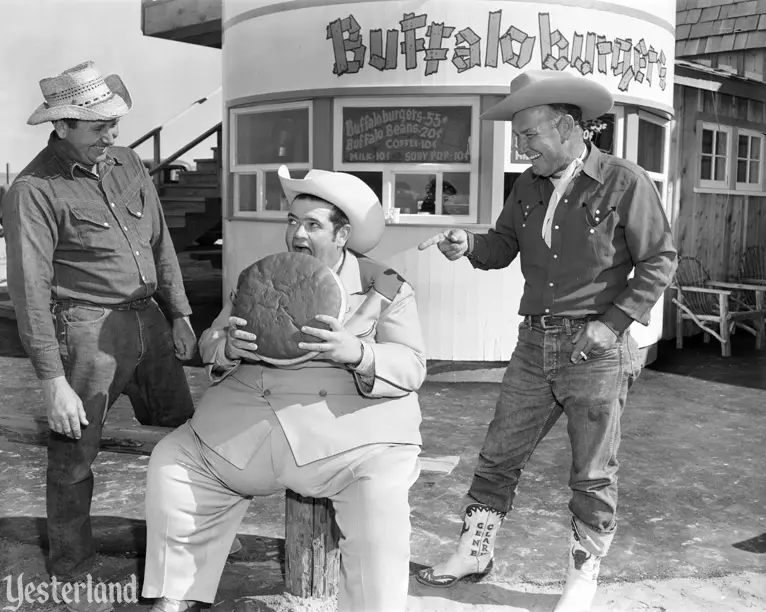
Photo by Robert Geivet, 1955, courtesy of the Old Orange County Courthouse Museum / Orange County Archives T. Texas Tiny with a custom-sized Buffaloburger |
|||
|
At the base of the white silo, you can order Buffaloburgers made from meat raised on the Ranch. T. Texas Tiny, the 400-pound country disc jockey, has a big appetite. Perhaps you’ve heard of him. He’s the guy who suggested to Richard Monsour that he should change his name. That’s why the “King of the Surf Guitar” is named Dick Dale, not Richard Monsour. Dick Dale invented surf music, but T. Texas Tiny invented the name Dick Dale. |
|||
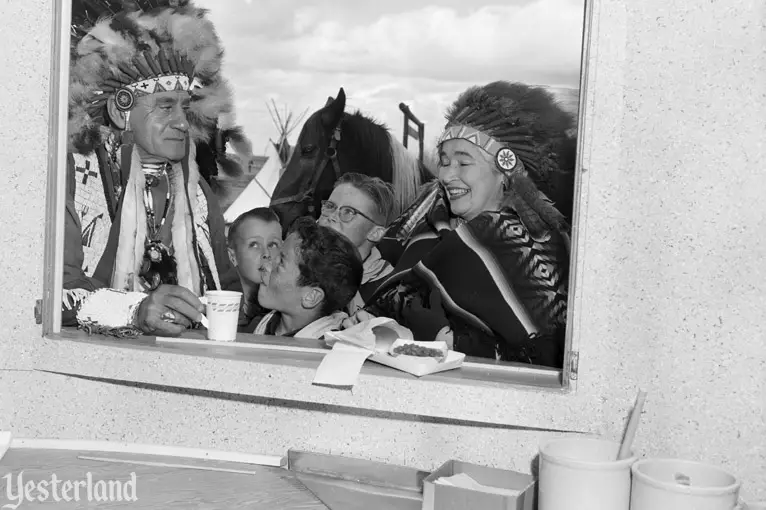
Photo by Robert Geivet, 1955, courtesy of the Old Orange County Courthouse Museum / Orange County Archives From inside the white silo |
|||
|
Step up to the window and place your order. The menu above the order window is simple:
Buffaloburgers · 55 cents In the picture above, a Buffaloburger and a paper tray of beans rest on the sill. Oh, and that’s Chief Push Ma-Ta-Ha again. He seems to be anywhere there’s a camera. A real Buffaloburger is quite a bit smaller than what T. Texas Tiny is holding. |
|||
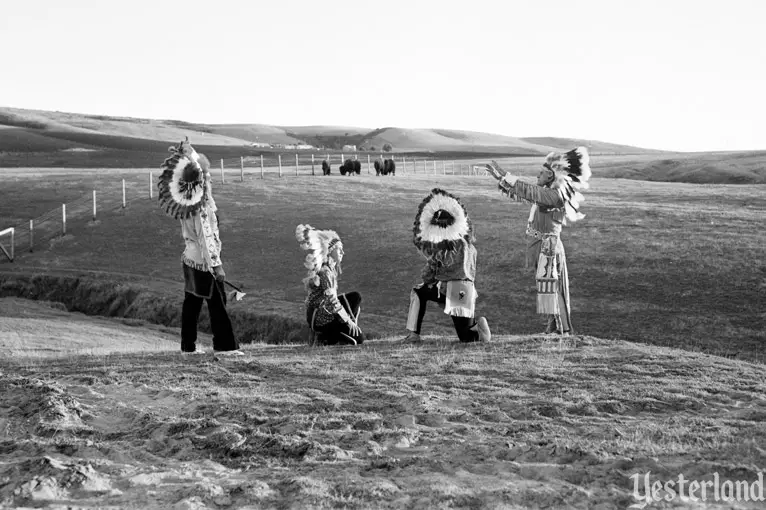
Photo by Robert Geivet, 1954, courtesy of the Old Orange County Courthouse Museum / Orange County Archives Chief Push Ma-Ta-Ha and other Indians with the buffalo |
|||
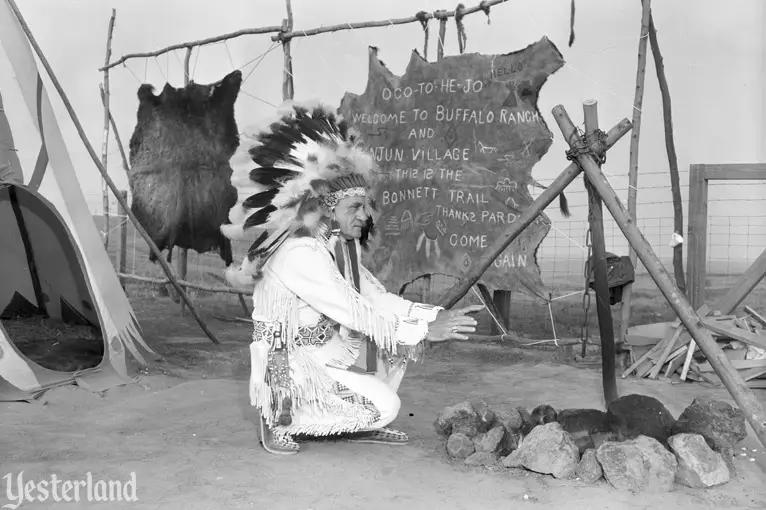
Photo by Robert Geivet, 1954, courtesy of the Old Orange County Courthouse Museum / Orange County Archives Chief Push Ma-Ta-Ha in the Indian Village |
|||
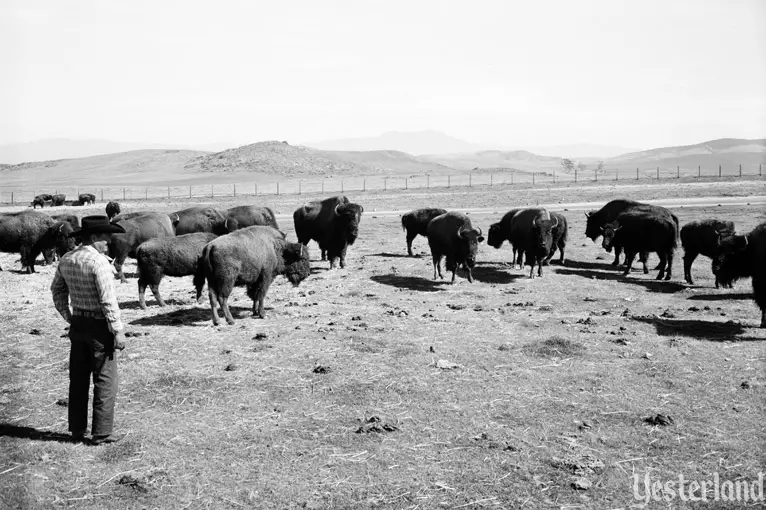
Photo by Robert Geivet, 1955, courtesy of the Old Orange County Courthouse Museum / Orange County Archives Chief Geronimo III visiting the herd |
|||
|
The Buffalo Ranch isn’t just a place to see buffalo. It’s also a place to meet real American Indians. You’ve already met Chief Push Ma-Ta-Ha, who likes to share authentic Indian stories with visitors. There’s a whole Indian Village. The Buffalo Ranch also has Chief Geronimo III, the grandson of famous Apache Indian Chief Geronimo. |
|||
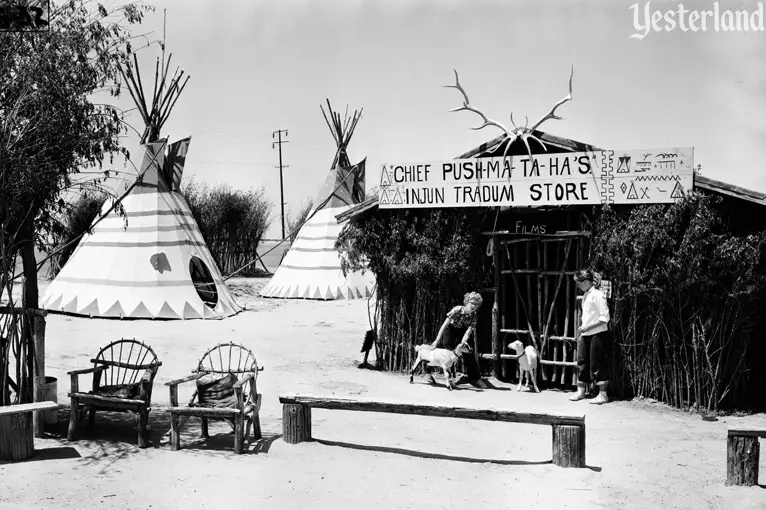
Photo by Robert Geivet, 1955, courtesy of the Old Orange County Courthouse Museum / Orange County Archives Chief Push-ma-ta-ha’s “Injun Tradum Store” |
|||
|
Chief Push Ma-Ta-Ha operates an Indian trading post in the authentic Indian Village. It’s likely he didn’t choose to call it the “Injun Tradum Store.” |
|||
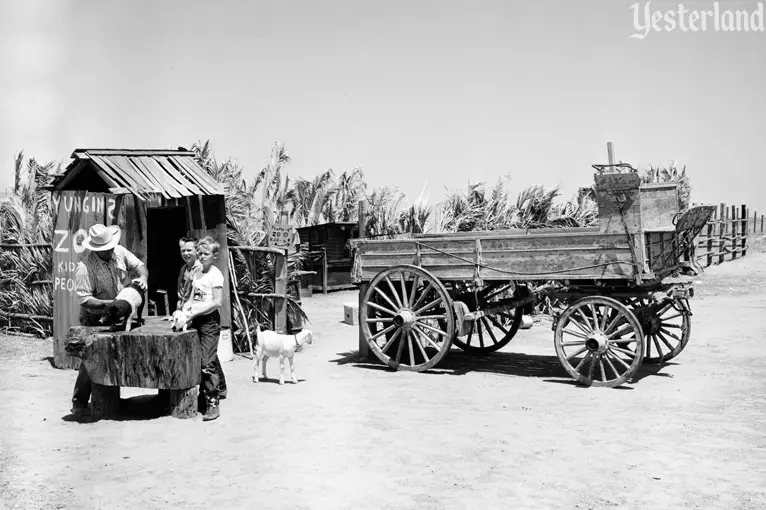
Photo by Robert Geivet, 1955, courtesy of the Old Orange County Courthouse Museum / Orange County Archives Animals other than buffalo |
|||
|
Do you have children with you today? Let them visit goats, chickens, geese, ducks, pheasants, peacocks, and pigeons at the “Yungins Zoo.” |
|||
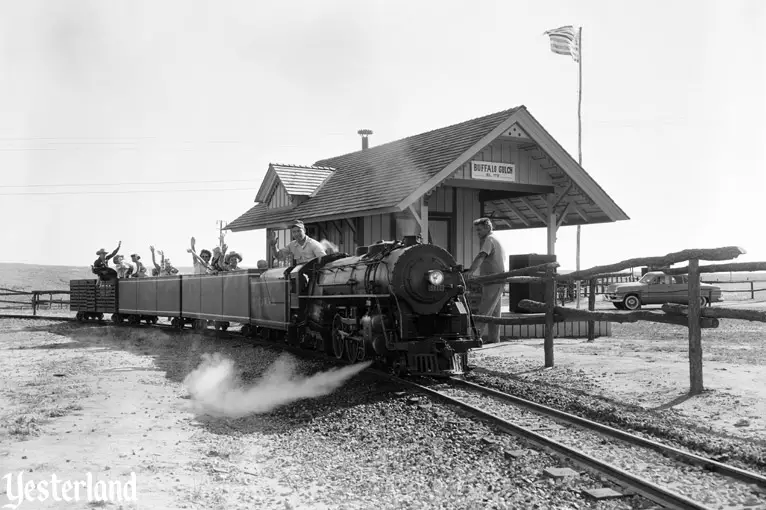
Photo by Robert Geivet, 1955, courtesy of the Old Orange County Courthouse Museum / Orange County Archives The Miniature Train Ride, one of several rides for children |
|||
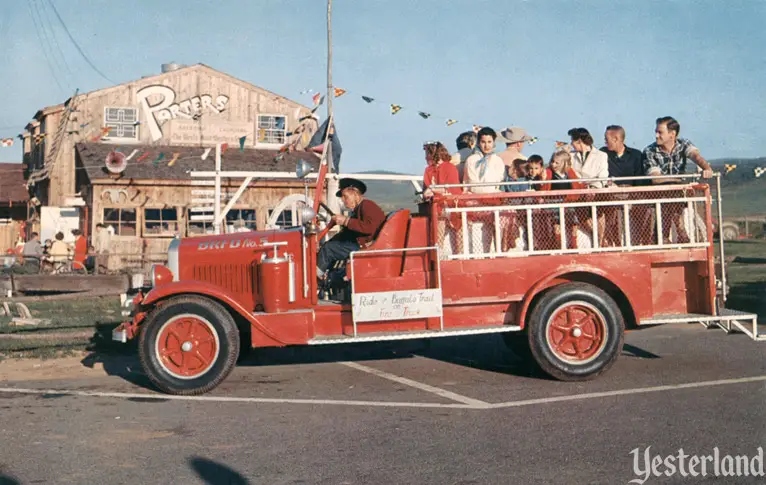
Photo courtesy of the Orange County Archives, from the Tom Pulley Collection Fire Truck Ride |
|||
|
There are rides here that are perfect for your children. They might want to start by taking the Miniature Train Ride past the “Old Goat Hide-out.” Then, there’s the Fire Truck Ride, which goes down a winding road past the buffalo herd, through the Western Street where they might see a gun battle, and past actual movie locations. The Burro Ride puts your children onto the backs of trained ring burros. The Miniature Tractor Ride lets your children drive Martin Special tractors. (The Martin Tractor Company has been serving Kansas farmers since 1911.) Your children won’t want to miss the Miniature Race Car Ride. They’ll drive down the “Lil Bucko” speedway, then over Rustler’s Gulch Bridge, and finally through the Buffalo Tunnel. |
|||
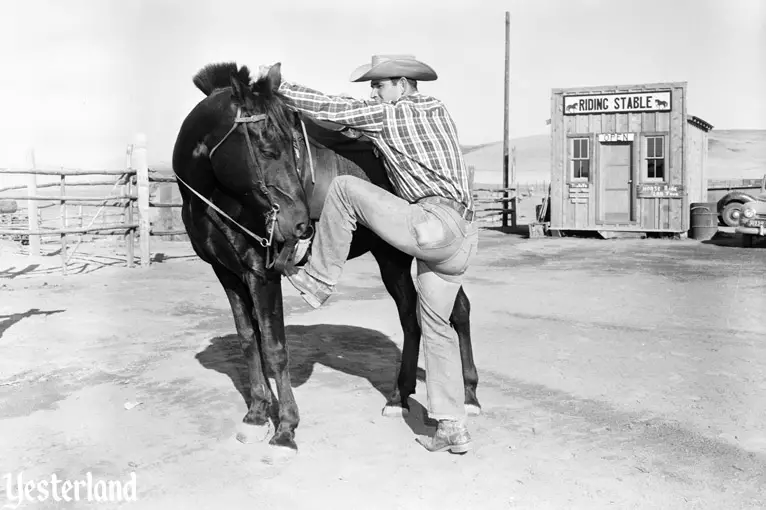
Photo by Robert Geivet, 1955, courtesy of the Old Orange County Courthouse Museum / Orange County Archives Ride like a cowboy |
|||
|
The horse played a major role in the Old West, so the Buffalo Ranch wouldn’t be complete without horses. You can take horseback riding lessons. Or sign your group for a moon-lit hayride on a horse-drawn wagon. |
|||
|
|
|||
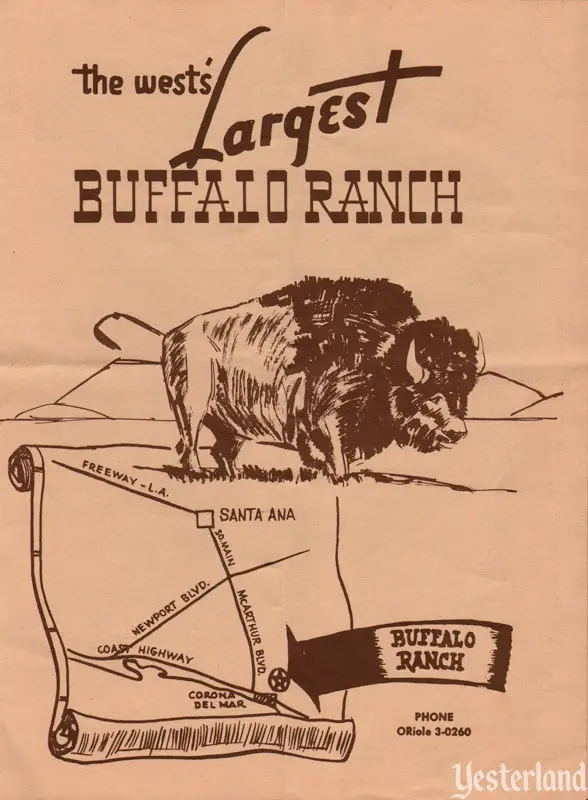
From the collection of Gerry De Soto, courtesy of Gerry De Soto Cover of an early promotional brochure |
|||
|
Once there were over a hundred buffalo grazing on the hills north of Corona del Mar. Now there are apartments, condominiums, and very wide roads. In 1954, Gene Clark, an ex-building contractor from Independence, Kansas, leased 115 acres of rolling grasslands from the Irvine Company. On November 10, 1954, the Los Angeles Times wrote, “Preparations were being completed today to receive a shipment of three truck-and-trailer loads containing 72 buffalo... which are scheduled for arrival Saturday morning at the Newport Harbor Buffalo Ranch on MacArthur Blvd., according to Gene Clark, owner.” Gene Clark didn’t waste any time opening the Ranch to the public. The buffalo would arrive Saturday. The public would be admitted Sunday, even though the official opening would not be until early 1955. |
|||
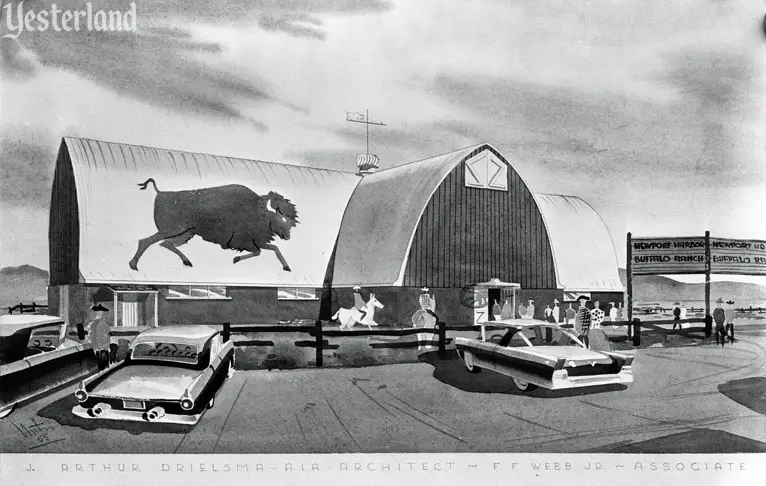
Rendering, 1955, courtesy of the Old Orange County Courthouse Museum / Orange County Archives Architect’s rendering of a never-built park entrance |
|||
|
Some of Gene Clark’s more ambitious plans never happened. In November 1955, Clark announced plans for a 2,000-seat auditorium for conferences, entertainment, and television programs; the 11,000 square-foot addition to the Buffalo Ranch would be themed to look like a traditional hay barn. Compared to the other attractions that opened in Southern California in the 1950s—Marineland of the Pacific (1954-1987), Disneyland (1955- ), and Pacific Ocean Park (1958-1967)—the Newport Harbour Buffalo Ranch was not a major attraction. But arguably it was the most unusual. By the late 1950s, the area around the Buffalo Ranch was changing. Across MacArthur Blvd., the Ford Motor Company had built a huge aerospace facility for their Aeroneutronic division. Plans were in the works for a University of California campus a short distance from the Buffalo Ranch. On October 15, 1959, the Los Angeles Times announced that the Buffalo Ranch would soon close forever. The land had become too valuable to use as a tourist attraction in the five years since the Ranch had opened. According to the newspaper, the operator was looking for a buyer for his herd of 17 buffalo. Just 17 buffalo? The herd had been over 100 in earlier years. The Buffalo Ranch closed and all the buffalo were shipped out. Architect William Pereira needed a regional office in the Irvine area. The Regents of the University of California had hired him to design the new Irvine campus, and the Irvine Company had hired him to develop a master plan for the entire Irvine Ranch. Pereira liked barns, so, in 1961, he transformed the Buffalo Ranch structures into an office campus called Urbanus Square. Although the buffalo were all shipped out around 1960, Orange County residents remember seeing buffalo grazing near the former Buffalo Ranch as recently as the 1990s. They weren’t hallucinating. In 1981, Urbanus Square became Lange Financial Plaza, home of Lange Financial Corp. (or LFC). In 1989, owner William Lange added a pen with four buffalo as a nod to the old Buffalo Ranch. It seems that when you have buffalo, the Irvine Company cancels your lease five years later. LFC had to move to make way for a road alignment and more intensive development of the land. LFC’s new, more conventional office space would have no place for the animals—Becky, Happy, Rainbow, and Lucky. In January 1994, the Orange County Fairgrounds bought Becky for their Centennial Farm. At an auction in February 1994, Huntington Beach resident John Cogorno bought Happy, Rainbow, and Lucky to live on a ranch—and never to wind up as Buffaloburgers. In May 1994, Becky gave birth to an 80-pound male calf, Tatonka, at the Fairgrounds. |
|||
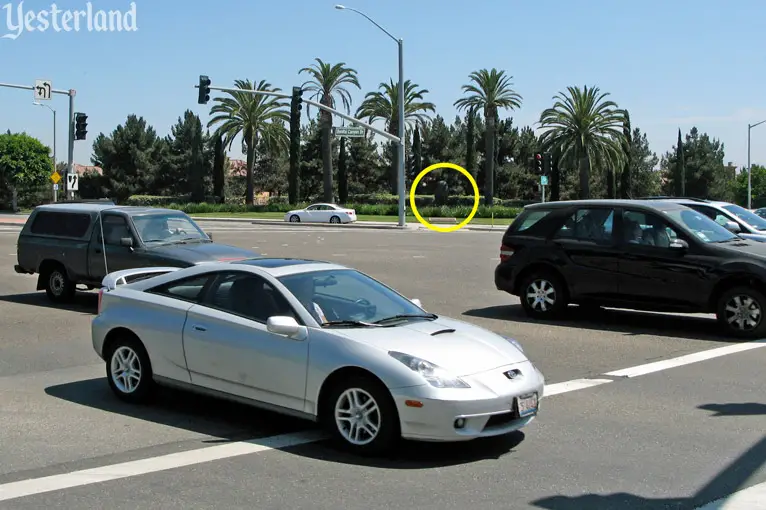
Photo by Werner Weiss, 2008 What’s at this corner? |
|||
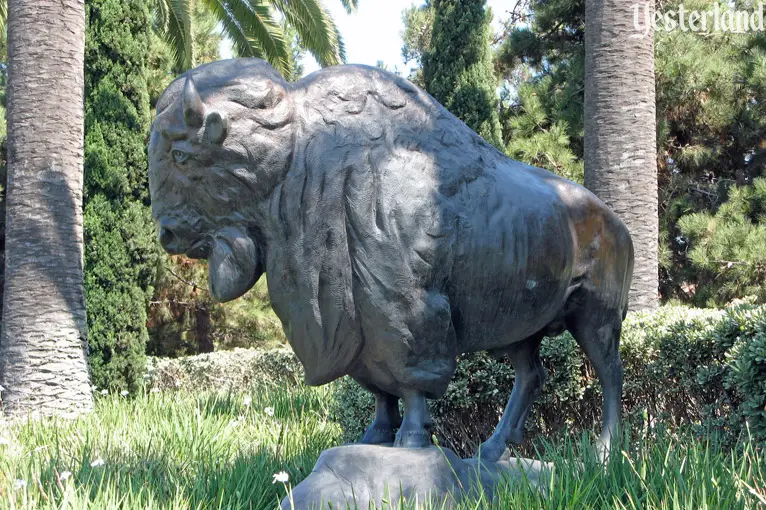
Photo Werner Weiss, 2008 The only remaining buffalo in Newport Beach |
|||
|
If you’re ever at the intersection of MacArthur Boulevard and Bonita Canyon Drive in Newport Beach, take a look at the northeast corner. Yep. It’s a life-size, bronze buffalo. There’s even a plaque in front of the sculpture. The text on the plaque begins like this: “In 1954, Myford Irvine granted a 115-acre lease to the Newport Harbor Buffalo Ranch for a sightseeing attraction in this location. The Buffalo Ranch provided a glimpse of the colorful days of the Old West with buildings, cowboys, chuckwagons, and Native Americans. The ranch was home to over 100 bison that were overlooked by Chief Cuthle Geronimo III, grandson of the famous Apache chieftain. The original Buffalo Ranch buildings, designed in an authentic western style including a barn and silo, were located on this corner.” |
|||
|
|
Click here to post comments at MiceChat about this article.
© 2008-2020 Werner Weiss — Disclaimers, Copyright, and Trademarks Updated January 5, 2020. |
||